Paramicrosphaeropsis L.W. Hou, L. Cai & Crous, gen. nov.
MycoBank number: MB 833538; Index Fungorum number: IF 833538; Facesoffungi number: FoF 11523
Etymology: From Greek παρα-, beside, referring to the close morphological and phylogenetic relationship with the genus Microsphaeropsis.
Conidiomata pycnidial, mostly semi-immersed, abundant, scat- tered or aggregated, mostly solitary, sometimes confluent, globose to subglobose, pale brown and the pycnidial wall hyaline at first, dark brown with age. Pycnidial wall pseudoparenchy- matous, thin, multi-layered. Conidiogenous cells phialidic, hyaline, smooth, subglobose, ampulliform to lageniform. Conidia variable in shape, broad ellipsoidal, oblong or ovoid, thin-walled, smooth, hyaline at beginning, brown with age, aseptate, mostly guttulate. Sexual morph unknown.
Type species: Paramicrosphaeropsis ellipsoidea L.W. Hou, L. Cai & Crous
Notes: – Paramicrosphaeropsis is introduced as a new genus belonging to Didymellaceae based on the multi-locus phylogenetic analysis and morphological characters. This genus is phylogenetically close to Neomicrosphaeropsis and Micro- sphaeropsis, and distant from all other known genera in Didymellaceae with high statistical support (100 % MLBS/1.0 BPP, Fig. 1). Morphologically, Paramicrosphaeropsis could be distinguished from other genera in this family by producing pycnidia with an extremely thin and hyaline pycnidial wall (almost hyaline when the conidia have exuded).
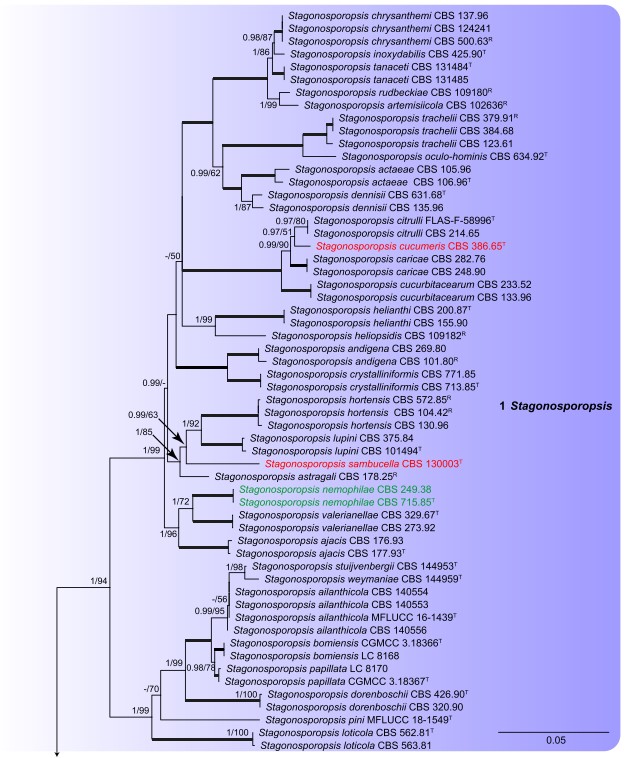
Fig. 1. Phylogenetic tree inferred from a Maximum Likelihood analysis based on a concatenated alignment of LSU, ITS, rpb2 and tub2 sequences of 597 strains representing Didymellaceae and outgroup sequences. The RAxML bootstrap support values (MLBS) above 50 % and Bayesian posterior probabilities (BPP) above 0.80 are given at the nodes (BPP/MLBS). Some of the basal branches were shortened to facilitate layout (the fraction in round parentheses refers to the presented length compared to the actual length of the branch). The scale bar represents the expected number of changes per site. Genera are delimited in coloured boxes, with the genus name indicated to the right. Strains with special status are indicated with a superscript letter after the accession number (R: representative; T: ex-type). The new species are printed in red font and new combinations in green font. The tree is rooted to Coniothyrium palmarum culture CBS 400.71, Neocucurbitaria aquatica culture CBS 297.74 and Pleiochaeta setosa cultures CBS 496.63 and CBS 118.25.
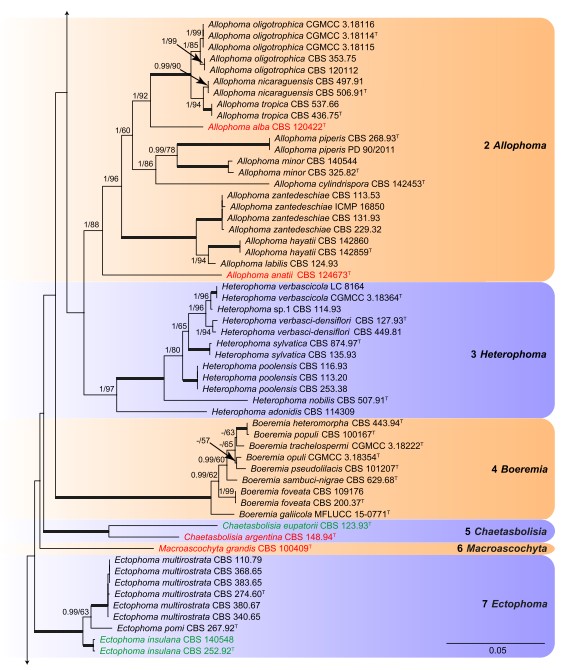
Fig. 1. (Continued).
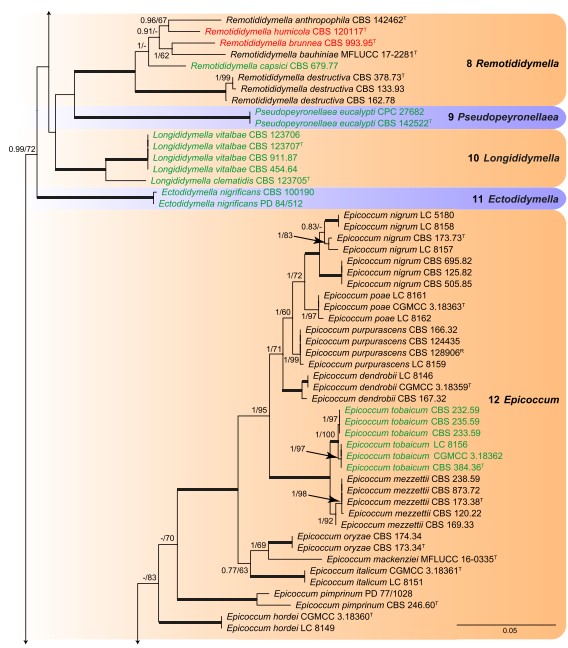
Fig. 1. (Continued).
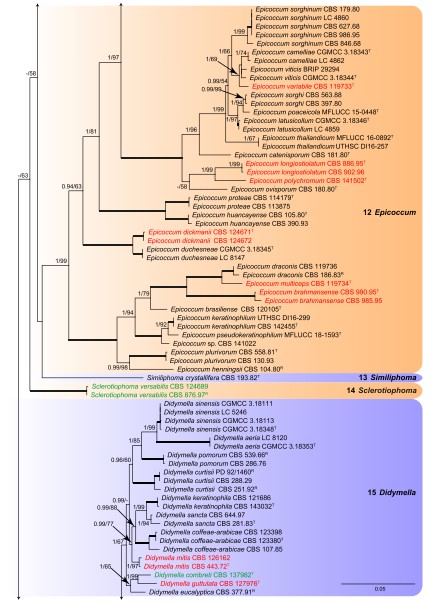
Fig. 1. (Continued).
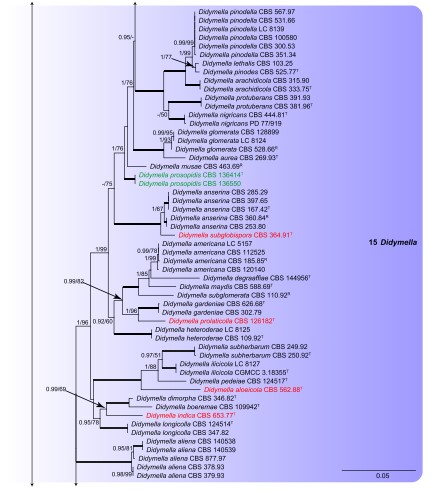
Fig. 1. (Continued).
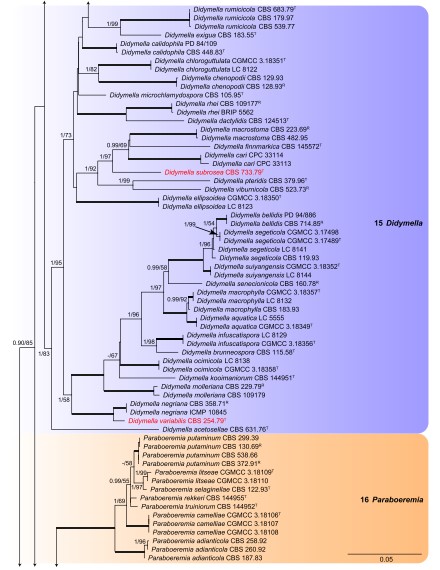
Fig. 1. (Continued).
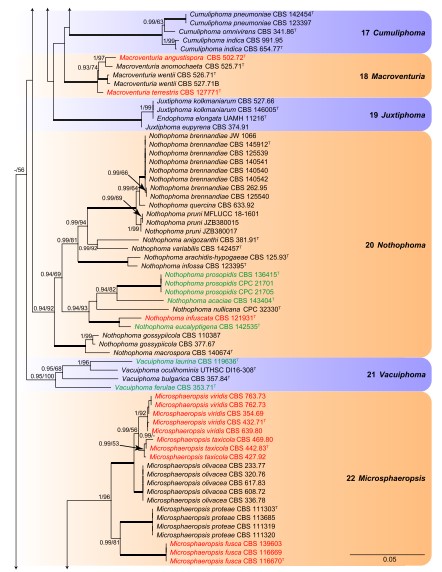
Fig. 1. (Continued).
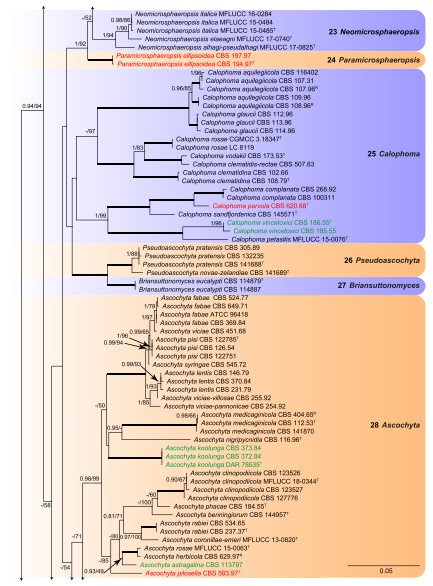
Fig. 1. (Continued).
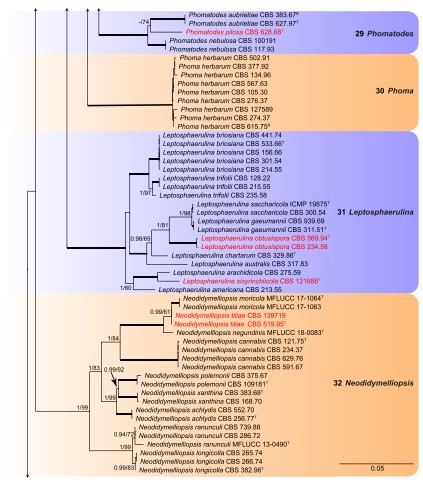
Fig. 1. (Continued).
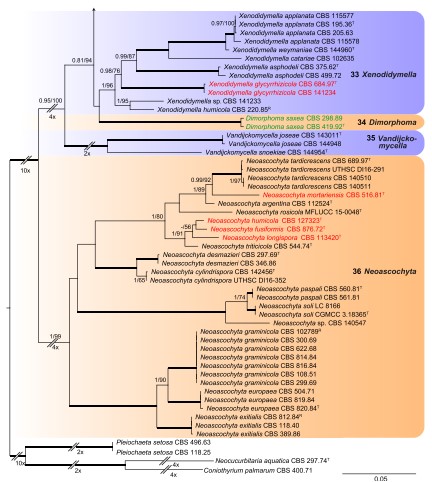
Fig. 1. (Continued).
Species
